Advanced Propulsion Systems
ISRO has undertaken the Gaganyaan Programme to demonstrate the human spaceflight to Low Earth Orbit (LEO). This, in the long run, will lay the foundation for a sustained Indian human space exploration programme. The scope of the programme is demonstration of human spaceflight to Low Earth Orbit with crew of up to three members for a duration ranging from one orbital period to a maximum of seven days, along with certain microgravity experiments.
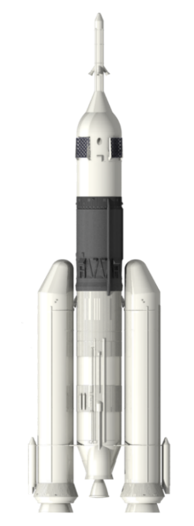 |
Human Rated Launch Vehicle:LVM3 Vehicle has been identified as space transportation system for human missions. This requires human rating of all systems in the LVM3 launch vehicle with respect to the international standards and additional system qualification & validation through multiple unmanned missions.
Orbital module (Crew module & Service module):The orbital module houses crew during the ascent, orbit, decent and recovery phases of the mission. The Crew Module serves as the pressurized habitat for the Crew and the Service Module is an unpressurised module consisting of the propellant tanks, thrusters, consumables for the life support system and mechanical & electrical interfaces to the launch vehicle and the Crew Module. |
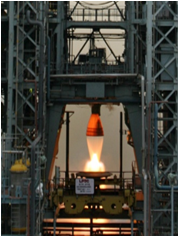 Vikas Engine Gaganyaan qualification hot test |
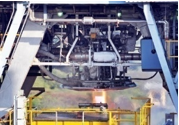 CE20 Engine Gaganyaan qualification hot test |
Crew module propulsion system development and qualification is completed through a series of System Demonstration Model (SDM) tests validating the system performance at integrated level. Similarly, Service module propulsion system development and system level qualification through a series of System Demonstration Model (SDM) tests is in progress at LPSC. The propulsion system for these modules makes use of MMH & MON-3 as propellants. Crew module propulsion system is meant to provide 3-axis control after service module separation upto deployment of parachute. Whereas, major functions of Service module propulsion system include orientation for de-boosting, De-boost the Orbital Vehicle, attitude hold and orbit raising, if required.
|
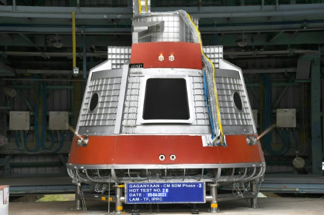 CM-SDM Test CM-SDM Test |
Environmental Control and Life Support System (ECLSS):Development of Cabin Pressure Control System (CPCS) of Crew Module, flow control components for Thermal & Humidity Control System (THCS) & Human Metabolic Simulator (HMS) are also under progress at the Centre. The main function of CPCS is to monitor and control the total pressure of Cabin and partial pressure of Oxygen within the specified limits by supplementing the Oxygen consumed by the crew from the stored Oxygen tanks. New flow control components and gas bottles are being developed to meet the gaseous Oxygen requirements. Similarly, THCS functions to maintain temperature & humidity of cabin within 23±3oC & RH 30-70%.
|
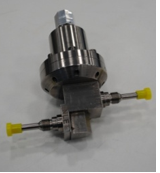 CPCS Redundant Pressure Regulator (CRPR) |
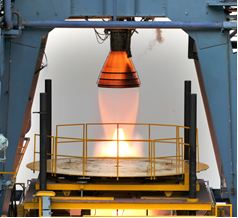 Vikas Engine |
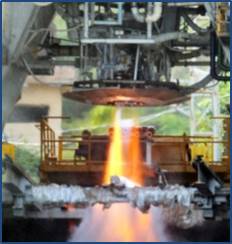 CE20 Engine |
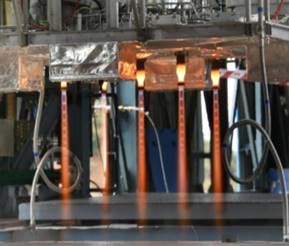 SMPS |
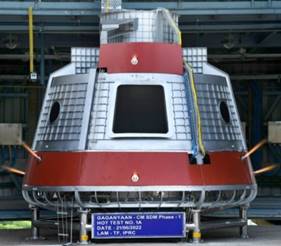 CMPS |
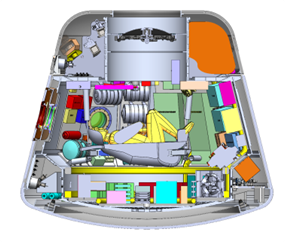 ECLSS |
** SDM: System Demonstration Model |
||||
| BAS as part of Gaganyaan follow on mission (Propulsion) | ||||
Semi-cryogenic Propulsion System Project (SPSP) envisages design, development, qualification and delivery of SC120 Semicryo flight stage for improving the payload capability of LVM3 launch vehicle. The Semi cryogenic engine makes use of eco-friendly and cost-effective propellants (LOX & ISROSENE).
 |
Semi-cryogenic stage (SC120) development is a major stride of ISRO towards attainment of self-reliance in the development of launch vehicles for future missions, which aim 5tonne class of payloads to GTO. The stage, with approximately 120tonne of propellant loading, is configured for LVM3 to fit into the envelope of L110 stage, without changing the overall dimensions of the vehicle. The SE2000 engine which produces 200tonne of thrust, working on staged combustion cycle, propels the stage. Besides using eco-friendly and relatively cheaper propellants, the SC120 stage also enhances the payload capability of LVM3 by about 640kg.
| |||||
| Specifications: | 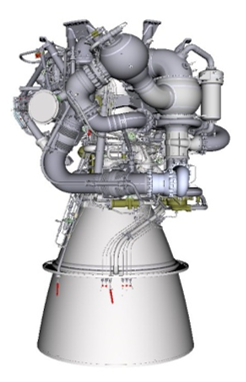 Semi Cryo Engine (3D model) Semi Cryo Engine (3D model) |
|||||
| Thrust | 2000 kN | |||||
| Burn Duration | 190 s | |||||
| Propellants | LOX & ISROSENE | |||||
| Propellant Loading | 120 t | |||||
| Stage Diameter | 4 m | |||||
| Stage Height | 17.31 m | |||||
The Electric Propulsion System uses electric power to accelerate the propellant (generally inert gases like Xenon) to very high exhaust velocities (to the order of 2000 m/s). By virtue of this high exhaust velocities, the specific impulse delivered by these type of thrusters is nearly 1700 to 2000 s.
|
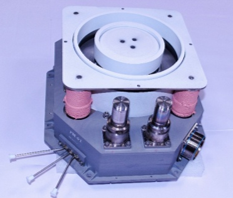 300mN SPT 300mN SPT |
Under this project developmental model of 300mN SPT was realized and tested successfully. The high efficiency power processing and control unit for driving these thrusters was also developed and tested with the thruster. The other flow control components like High Pressure Latch Valves, Electronic Pressure Regulator, Mechanical Pressure Regulators, Proportional Flow Control Valves and MEMS based pressure transducers are designed and developed by LPSC. Test facility comprising of a large vacuum chamber is established. Associated systems, like Laser Induced Fluorescence System for plume analysis, Thrust Measurement System etc. are being established for qualification of thrusters.
LOX-Methane is a new promising propellant combination for launch vehicle propulsion. Methane is the simplest hydrocarbon widely available in deposits of natural gas and gives maximum performance of all hydrocarbons when it burns with liquid oxygen. Methane has better cooling capabilities, less soot formation and higher cocking limits compared to kerosene fuel. Compared to Liquid Hydrogen, Liquid Methane (LCH4) has higher density impulse, less insulation requirements and is much safer. Methane is considered as a soft cryogen due to higher normal boiling point of 111K as compared to 20K for LH2. Since the boiling points of LOX and LCH4 are in the similar order common bulk head tank can be designed. Abundant availability of Methane in other planets makes it a good candidate for interplanetary exploration. It can be harvested from Mars, Titan, Jupiter and many other planets and moons. Due to these advantages, significant development efforts are going on worldwide for development of LOX-Methane Engine.
|
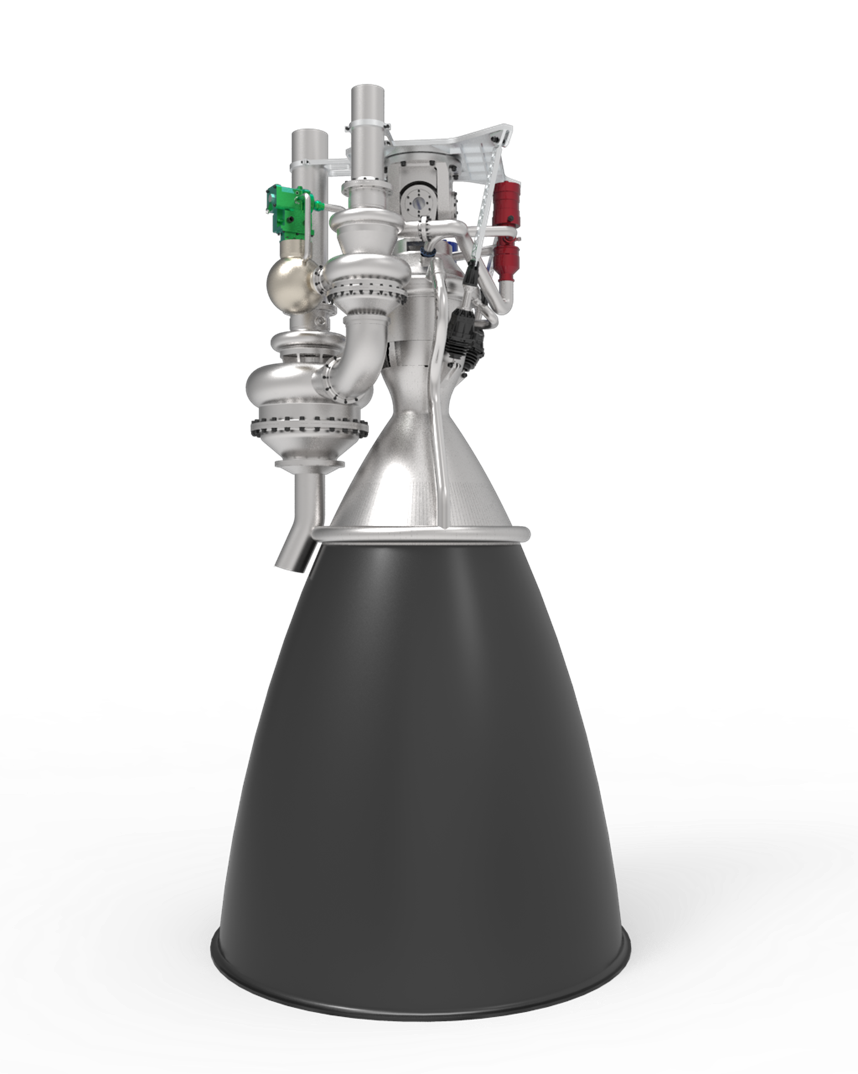 LME-1100 LME-1100(1100kN Class LOX-LCH4 Engine) |